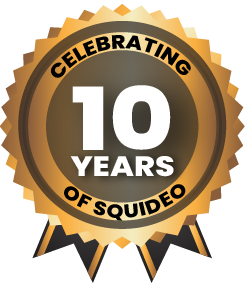Animated Video Companies vs. Freelancers
Adam Shelton
When it comes to video animation, there are tonnes of different agencies and freelancers offering their video production services to businesses worldwide, but which is truly best for your business?

With many businesses now choosing to outsource their marketing endeavours, they will often find themselves trying to decide between acquiring services from either a freelancer or an agency. What is the smartest decision and why?
Squideo are here to give you the information you need to decide whether a freelancer or an agency is right for your animated video production by listing the pros and cons of each.
When choosing to create a video animation, you may believe that hiring an experienced animation agency to create your marketing video is the best route to go down. On the contrary, if you have a smaller budget or want something turned around urgently, you may believe that a freelance animator is your best bet. The truth is there are pros and cons when we examine the use of both freelancers and animators.
Freelancers
However, the first hurdle you may come across when finding a quality freelancer is their availability. As there is only usually one person working on any one project at a time, availability is often limited. The high demand of using a popular freelancer or even something as simple as illness/holiday could mean that your scheduled delivery date may need to be pushed back, or you have to find a freelancer who may not have the very best reputation to help you complete your project in time.
Squideo's video producers are multi-skilled in all different areas of animation, from character creation, illustration and even digital marketing. Although freelance animators may possess certain skills, it is unlikely that they will be fully-trained in every single sector of animation, design and marketing which is another disadvantage of using a freelancer over an animation agency.
Agencies
Availability is one of the biggest pros when choosing to work with an animation agency. As agencies tend to have a team of creatives including animators and marketers, they are much more reliable when it comes to getting your animated video project completed on time.
Animation agencies typically consist of 5+ members which is ideal for those businesses looking for a reliable team to produce their animated video. Having a larger team increases the likelihood of the agency being able to offer their clients different types of animation due to the variety of skills their team members possess.
One disadvantage when it comes to using an animation agency is that you are likely to pay more than you would a freelancer due to the experience they possess and the overheads that the animated video production process involves. Unlike freelancers, animation agencies have a full team to pay which means costs are often that bit higher. However, your investment is highly likely to pay off with an agency, as the input from an entire team of dedicated creatives means the final product is more likely to be higher quality and more memorable.
So, which do you choose?
Freelance animators are well-known for their ability to provide businesses with cost-effective marketing tools with very fast project turnarounds. Animation agencies are often praised for their ability to create high quality animation that generates an epic return on investment. But which one is best?
Despite there being a number of different pros and cons for both, we strongly believe that a video animation agency is the best route to take when it comes to investing in your video marketing strategy. Not only will an agency be reliable, their entire team will work collaboratively to create a video animation that works for your intended goals and aims.
If you're looking for a video production agency which can provide top-quality animated explainer video for a low cost and with a fast turnaround time, get in touch with the team at Squideo today!

Struggling to turn website visitors into actual customers? You’re not alone. High traffic means nothing if confused users leave without converting. Whether it’s unclear messaging, overwhelming copy, or a lack of instant clarity; these issues silently kill conversions. In fact, most visitors decide whether to stay or bounce in under 10 seconds. That’s where explainer videos come in. They simplify, clarify, and sell. Below, you’ll discover five proven strategies to fix low CVR with video, all designed to keep users engaged, informed, and ready to take act 1. Hold Attention Instantly: The 10‑Second Rule Most UX studies highlight that website visitors often bounce from a page in just 10–20 seconds unless they’re presented with a clear value proposition immediately. Explainer videos solve that by offering a play button - a low commitment invitation. On average, 79% of users prefer watching a video over reading text, and 97% say the right explainer helped them better understand a product. Action Tip: Place your explainer video above the fold and keep it to 60 seconds or less. That time frame aligns with best practices and keeps users engaged. 2. Cut Through Overload by Simplifying Complex Ideas When visitors don't understand what you're offering, they leave. Explainer videos work because visuals and narration stick better than text. In fact, viewers retain 95% of a message from a video versus only 10% from reading. They also help unpack intricate information, like SaaS features or internal processes, which might otherwise overwhelm. Action Tip: Use animation to highlight how your product solves a problem or improves life, not just what it does. 3. Build Trust Quickly Without Walls of Text Trust is a key conversion driver. When people land on your site, they want answers fast. They’re not looking to scroll through paragraphs to figure out what you do. They want clarity and confidence. That’s why explainer videos are so powerful. They build trust by simplifying your message and delivering it in a way that’s easy to understand and hard to forget. Brands using explainer videos report up to an 81% boost in sales conversions, and some see support tickets drop by over 50%, because the video handles the heavy lifting upfront. There's real science behind it, too. Studies show that people retain information better when it’s delivered through both visuals and audio. An explainer video does exactly that, combining clean animation with clear narration to connect faster and stick longer. If trust is the barrier, video is your shortcut. 4. Seamlessly Guide Viewers to Take Action Explainer videos should end with a clear and compelling CTA. After 90 seconds of content, viewers are primed to act. Videos don’t just engage, they drive deeper attention. Landing pages with video keep visitors on-site longer, increase click-throughs, and boost conversions. Action Tip: Combine your video with a strong visual CTA right below, like “Book a Demo” or “Watch the Next”. 5. Multiply Touchpoints, Multiply Conversions Explainer videos don’t live on landing pages alone. Deploy them across email campaigns, social ads, pitch decks, and internal comms - honestly the list goes on! One study shows that personalised videos in outreach emails can lead to 5× higher open rates and 8× more replies. Action Tip: Reuse your core 60‑second explainer in trimmed formats for LinkedIn, YouTube prereels, and support libraries. Explainer videos aren’t just a marketing accessory, they’re high-conversion powerhouses. When done with clarity, creativity, and strategic placement, they become your silent salesperson. Squideo’s style is clean 2D visuals, a flair for storytelling , and a rhythm that keeps viewers watching. Got a brief ready? Share it with us today for a free , no-pressure quote. Not quite there yet? Download our free brief template to get started in minutes.














